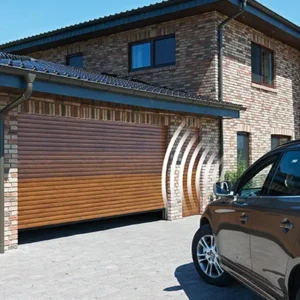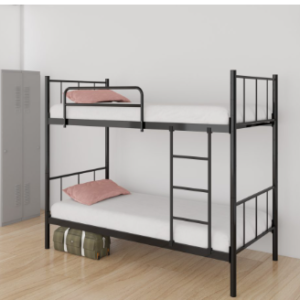Condensation is a common issue for many homeowners in Southampton, leading to dampness, mold growth, and structural damage if not addressed properly. This comprehensive guide will help you understand the causes of condensation Southampton, its effects on your home, and the best solutions to prevent and manage it effectively.
What Is Condensation?
Definition and Process
Condensation occurs when warm, moist air comes into contact with a cold surface, such as a window or wall. The moisture in the air cools down and changes from a gas to a liquid, forming water droplets on the surface. This process is common in homes, especially in areas with poor ventilation and high humidity.
Types of Condensation
There are three main types of condensation that can affect homes:
- Surface Condensation: This is the most common type, occurring on cold surfaces like windows, walls, and floors.
- Interstitial Condensation: This type occurs within the layers of a building’s structure, such as within walls, floors, or roofs, and can lead to hidden damage.
- Cold Bridge Condensation: This happens where there is a break in the insulation, causing a cold spot in the structure, which can then attract condensation.
Causes of Condensation
Environmental Factors
Climate and Weather
Southampton’s maritime climate, characterized by mild, wet winters and cool summers, can contribute to higher humidity levels in homes. Prolonged periods of rain and cooler temperatures can increase the likelihood of condensation.
Seasonal Changes
Seasonal variations, particularly the transition from warm to cold weather, can lead to increased condensation as the temperature difference between indoor and outdoor environments becomes more pronounced.
Internal Factors
Humidity Levels
High indoor humidity levels are a primary cause of condensation. Everyday activities such as cooking, bathing, and drying clothes indoors release moisture into the air, raising humidity levels.
Poor Ventilation
Inadequate ventilation prevents moist air from escaping, leading to a buildup of humidity. Homes with sealed windows and doors, or lacking proper ventilation systems, are more prone to condensation.
Insulation
Insufficient or improperly installed insulation can create cold spots in a building’s structure, promoting condensation. Cold bridges, where insulation is absent or inadequate, can attract moisture and lead to dampness.
Effects of Condensation
Structural Damage
Damp and Mold
Condensation can lead to damp patches on walls, ceilings, and floors. Over time, this dampness can foster mold growth, which can cause structural damage and decay in wood and plaster.
Rot and Decay
Prolonged exposure to moisture can cause wooden structures, such as beams and floorboards, to rot and decay, compromising the structural integrity of the home.
Health Issues
Respiratory Problems
Mold spores released into the air can cause respiratory problems, such as asthma and allergies. Inhaling these spores can irritate the respiratory tract and exacerbate existing health conditions.
Allergies
Exposure to mold and dampness can trigger allergic reactions, including sneezing, runny nose, and skin rashes. These symptoms can be particularly severe for individuals with existing allergies or compromised immune systems.
Identifying Condensation
Visual Signs
Water Droplets
Water droplets on windows, walls, and other cold surfaces are the most obvious sign of condensation. These droplets can form during cooking, bathing, or other activities that generate moisture.
Damp Patches
Damp patches on walls, ceilings, and floors indicate areas where condensation has occurred. These patches can appear discolored or feel cold and damp to the touch.
Secondary Signs
Musty Odors
A musty odor in the home often indicates the presence of mold and dampness caused by condensation. This smell can permeate furniture, carpets, and other household items.
Peeling Wallpaper and Paint
Peeling wallpaper and flaking paint are signs of moisture damage. Condensation can cause these materials to lose adhesion, leading to visible deterioration.
Preventing Condensation
Improving Ventilation
Natural Ventilation
Opening windows and doors can help increase air circulation and reduce indoor humidity levels. Cross-ventilation, where air flows through the home from one side to the other, is particularly effective.
Mechanical Ventilation
Installing extractor fans in kitchens and bathrooms can help remove moist air at the source. Whole-house ventilation systems, such as heat recovery ventilation (HRV) units, can also improve air quality and reduce humidity levels.
Reducing Humidity
Dehumidifiers
Using dehumidifiers can help reduce indoor humidity levels by extracting moisture from the air. Place dehumidifiers in areas prone to condensation, such as kitchens, bathrooms, and basements.
Houseplants
Certain houseplants, like peace lilies and Boston ferns, can help absorb moisture from the air, naturally reducing humidity levels. However, it’s essential to avoid over-watering these plants, as this can contribute to humidity.
Insulation and Heating
Proper Insulation
Ensure that your home is adequately insulated, particularly in the roof, walls, and floors. Insulating these areas can help maintain a consistent indoor temperature, reducing the likelihood of condensation.
Consistent Heating
Maintaining a consistent indoor temperature can help prevent condensation. Avoid letting your home get too cold, especially during the winter months, and use a programmable thermostat to maintain steady heating levels.
Treating Condensation
Short-Term Solutions
Wiping Surfaces
Regularly wiping down surfaces prone to condensation can help prevent the buildup of moisture and reduce the risk of mold growth. Use a dry cloth or squeegee to remove water droplets from windows and walls.
Temporary Dehumidifiers
Using portable dehumidifiers can provide temporary relief from high humidity levels. These devices are particularly useful during periods of high moisture production, such as after cooking or bathing.
Long-Term Solutions
Installing Ventilation Systems
Installing mechanical ventilation systems, such as extractor fans or HRV units, can provide a long-term solution to condensation by ensuring continuous air exchange and reducing humidity levels.
Upgrading Insulation
Investing in high-quality insulation can help prevent cold spots and reduce the risk of condensation. Ensure that insulation is installed correctly to avoid creating thermal bridges that can attract moisture.
Professional Help for Condensation Issues
When to Seek Professional Help
Persistent Condensation
If you experience persistent condensation despite implementing preventive measures, it may be time to seek professional help. Continuous dampness and mold growth can indicate underlying issues that require expert intervention.
Structural Damage
Significant structural damage, such as rotting wood or compromised plaster, should be addressed by professionals. These issues can affect the safety and integrity of your home and require specialized treatment.
Choosing a Professional
Qualifications and Experience
Choose a professional with relevant qualifications and experience in dealing with condensation issues. Look for certifications from reputable industry bodies and positive customer reviews.
Services Offered
Ensure that the professional offers a comprehensive range of services, including inspection, diagnosis, and treatment of condensation issues. They should also provide advice on preventive measures to avoid future problems.
Case Studies: Condensation Solutions in Southampton Homes
Victorian Terrace House
Problem
A Victorian terrace house in Southampton experienced severe condensation issues, particularly during the winter months. The homeowners noticed damp patches on the walls and mold growth around the windows.
Solution
A professional inspection revealed inadequate ventilation and insulation as the primary causes of condensation. The homeowners installed extractor fans in the kitchen and bathroom and upgraded the insulation in the loft and walls. These measures significantly reduced humidity levels and eliminated condensation issues.
Modern Apartment
Problem
A modern apartment in Southampton had persistent condensation on the windows and cold spots on the walls. The tenants also reported a musty odor and peeling wallpaper.
Solution
The building management installed a whole-house ventilation system, improving air circulation and reducing humidity levels. They also applied a mold-resistant paint to the affected walls and sealed any gaps in the insulation. These actions resolved the condensation issues and improved indoor air quality.
Frequently Asked Questions About Condensation
How Can I Tell If I Have Condensation or Damp?
Condensation typically appears as water droplets on cold surfaces, while dampness often manifests as discolored patches on walls and ceilings. Both issues can lead to mold growth, but dampness may also cause a musty odor and peeling wallpaper.
Is Condensation Worse in Winter?
Yes, condensation is often worse in winter due to the temperature difference between indoor and outdoor environments. Cold surfaces, combined with indoor activities that produce moisture, can increase the likelihood of condensation.
Can Condensation Cause Structural Damage?
Yes, prolonged condensation Southampton can lead to structural damage, including rotting wood, compromised plaster, and mold growth. Addressing condensation promptly can help prevent these issues and maintain the integrity of your home.
What Is the Best Way to Prevent Condensation in Bathrooms?
Installing an extractor fan in the bathroom can help remove moist air at the source. Additionally, keeping the bathroom door closed while showering and using a dehumidifier can further reduce humidity levels and prevent condensation.
How Often Should I Check for Condensation?
Regularly check for condensation, particularly during the winter months and after activities that produce moisture, such as cooking or bathing. Promptly addressing any signs of condensation can help prevent more significant issues.
Conclusion
Condensation is a common problem for Southampton homeowners, but understanding its causes and implementing effective solutions can help manage and prevent it. By improving ventilation, reducing humidity, and ensuring proper insulation, you can protect your home from the damaging effects of condensation. Regular inspections and professional help, when needed, will ensure that your home remains dry, comfortable, and free from mold and dampness.





